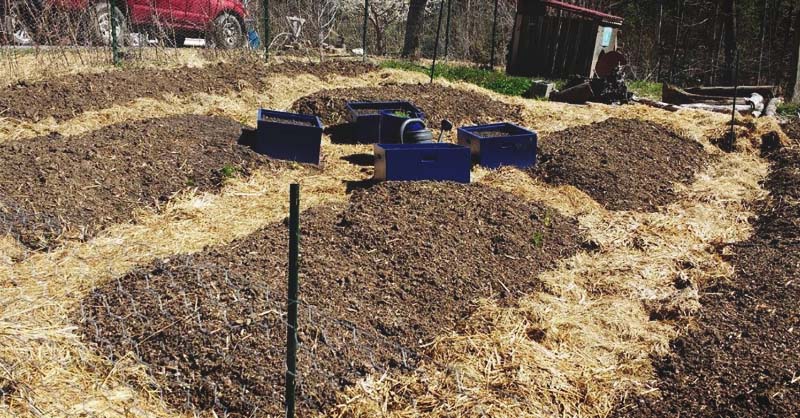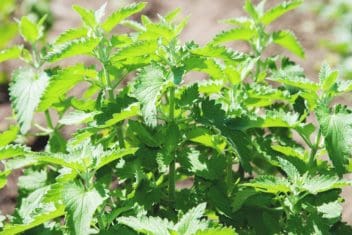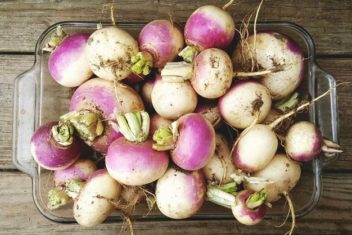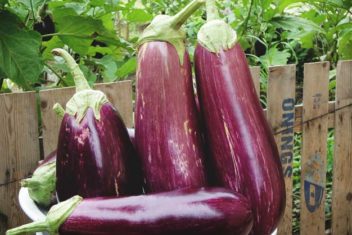There are a lot of great methods for controlling weeds without the use of chemicals. In fact, I can name 18 effective ways of controlling weeds off the top of my head. You could even use weeds in creative ways, and some are even edible!
But, when you are growing an organic garden, you need more than a great repertoire of techniques to control weeds. You need a master weed control plan!
An organic weed control plan is a comprehensive approach to manage weeds in your garden year round. It starts with garden preparation and ends with how you put your garden to rest at the end of your growing season.
The good news is that a good weed control plan ties right in with building soil fertility and creating the perfect planting environment for your chosen plants to thrive. If that sounds like the way you want to manage weeds, then let’s get started building a master plan!
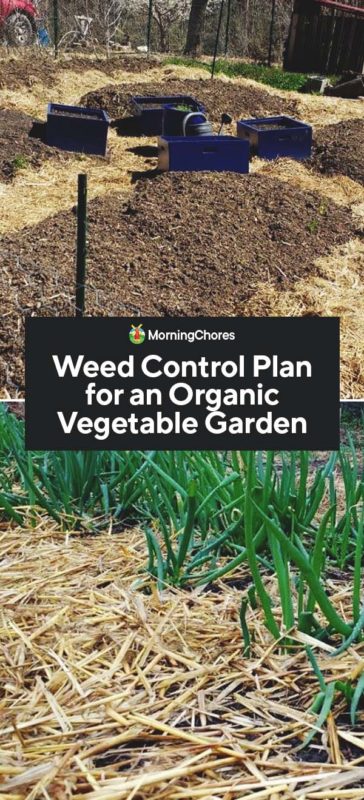
Understanding Weeds
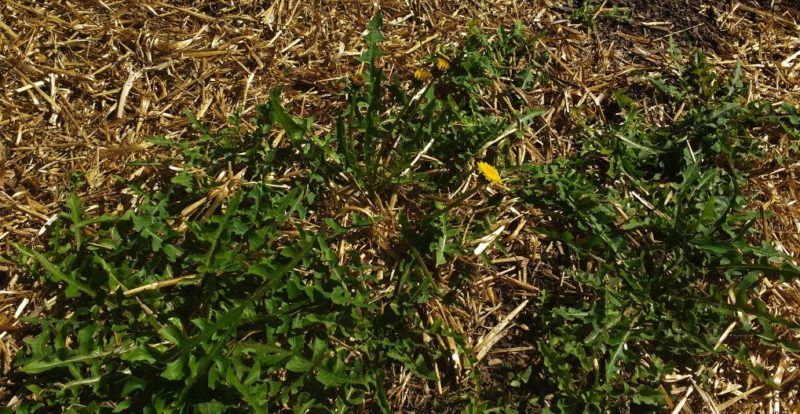
Before you hit the garden to control weeds, first you need to understand your adversary. Cultivated gardens have only been around for a few thousand years. Weeds, on the other hand, have had tens to hundreds of thousands of years head start on your garden.
Nature’s Perfect Plants
Weeds, otherwise known as plants that have been planted by nature, have become perfectly adapted to the conditions where they sprout. They are particularly suited to the ups and downs in temperatures in the regions where they have evolved for generations. They have learned, season after season, how to thrive in their environment.
Fail Safe Weed Seeds
Additionally, weeds are smart. Just in case stuff goes wrong with the weather, they have fail safes in place to ensure their survival. For example, they tend to create enormous amounts of seeds.
Some of those seeds are specifically designed by nature to stay dormant in the soil for years. Some are even intentional outliers created by nature to sprout in cooler, warmer, drier, or wetter conditions than are typical for the region they grow in.
Endurance Athletes of the Plant World
In other words, weeds are like the professional endurance athletes of the plant world. They have incredible resilience when performing the functions they’ve spent their long genetic histories training for.
Like many athletes, though, weeds are best suited for the conditions they’ve trained for. And those conditions are the ones that existed before you start growing a fertility-based organic garden.
That fact, my homesteading friends, is your key to conquering weeds. Er, well, maybe not quite conquering, but at least peacefully co-existing!
Classes of Weeds
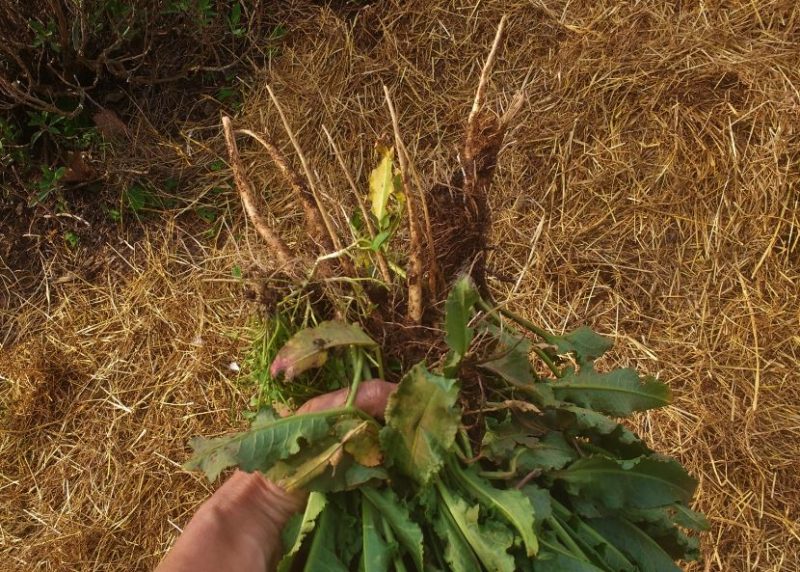
Although there’s an incredible variety of weeds out there, when you get right down to it, most of the weeds fall into a few basic categories. Understanding these can help you plan to eradicate them from the garden.
Taprooted Weeds (e.g. Dandelions, Lambsquarters, Dock)
Taproot weeds are slow to start and hard to eradicate once established. Their seeds need light to germinate, but they can also spread by root cuttings. So, if you till up taprooted weeds, you end up with lots more taprooted plants.
Niche-Fillers (e.g. White Clover, Crabgrass)
These plants take up empty space left unoccupied by changes in environmental conditions. For example, white clover or crabgrass jump in to fill blanks in a lawn left by drought or compaction that prevents grass from growing well. In a garden, they indicate either dry or compacted soil.
Opportunists (e.g False Strawberry, Brambles)
Opportunists, like the false strawberry that spreads by runners, take advantage when we fall short as gardeners. They make use of the fertility we add to the top few inches of our soil. Then they exploit the inevitable compaction created when we leave tilled soil bare and under-utilized.
Things like wild blackberry brambles are also opportunists. They do their spreading deeper in the ground via underground roots. They spread quickly through soil that that was either tilled deeply and amended with organic matter or once occupied by large roots that die and become organic matter.
Weeds of Gardening Excellence
There’s also one group of weeds I barely deem worthy of the term weed. These plants show up when your garden is in good shape. Things like henbit, chickweed, and cress family plants love good garden soil. Also, volunteer vegetables from seeds in your compost fall into this class.
The only thing these indicate is that you have available fertility. If your garden were densely planted, these plants would not have the room or fertility to grow well.
A 9-Step Weed Control Plan
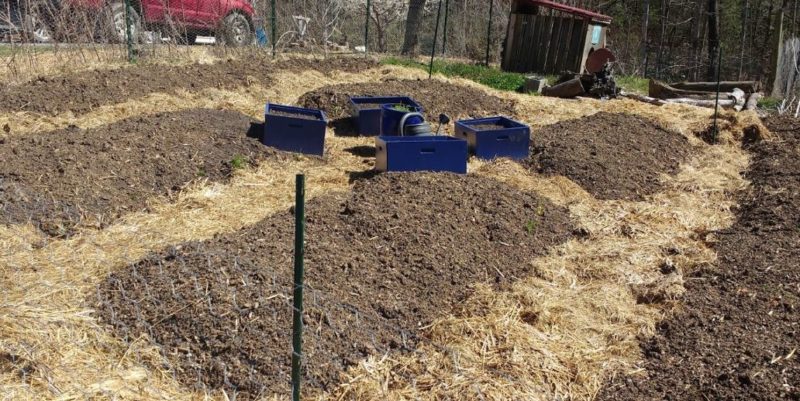
Tackling these weeds requires a multi-step approach. It’s a bit of work at the outset. However, these steps not only help control weeds, but they also grow your garden!
With that background, let’s get down to the business of making a master weed management plan.
Step 1: Identify Your No Weed Grow Zone
Weeds are an important part of nature, and they are rockstar growers. So, you will never control them all. Plus, you shouldn’t want to. They serve vital functions in protecting and supporting soil life.
Rather than fighting a losing battle, identify the areas where you will not tolerate them. Then, mark your borders clearly. Creating a “no-grow” zone won’t stop weeds from trying. But, clearly marking it, makes it easy for you to know when weeds are invading again.
Personally, I dig a trench that is about 2 feet wide and 12 inches deep around the perimeter of most of my garden areas. This is a physical barrier that makes it hard for plants that spread by roots or runner. It’s also a visual barrier that makes it easy to see when weeds are moving into your no-grow zone.
When that’s not practical, I grow a buffer zone of my preferred plants such as real strawberries, herbs, and wildflowers that will outcompete weeds. Those do sometimes become weeds themselves, but I learn to spot their seedlings and yank unwanted plants early.
If you don’t have that digging stamina or enough room to make a buffer zone, then you may need to resort to weed killer around your weed perimeter. You can use organic weed killers like horticultural vinegar, rather than glyphosate.
Or, you can smother weeds with plastic. Then, apply corn gluten or corn fertilizer meal to suppress seed germination.
Step 2: Remove Taprooted Plants
Ideally, before you start a garden, you should dig up and remove any tap-rooted plants entirely. Since taprooted plants can regrow from partial roots, this is the only way to ensure the roots won’t get nicked by your shovel or your tiller and become multiple plants.
If your garden is already well-established, just cut the tops of your tap-rooted vegetables throughout the season. They’ll keep coming back. But, they’ll spend so much time on leaf growth that they won’t seed. Then, whenever you harvest whatever is in your bed, dig down and remove any taprooted weeds you have growing.
Some of those roots are even edible. Dandelion root makes good tea. Dock roots can be cooked like carrots. So, consider that extra work a bonus harvest.
Step 3: Surface Weed
Before I prepare a bed for planting, I pull out any weeds that I see. It’s much easier to weed before you plant. That way, as your chosen plants grow in, you don’t risk disturbing their roots each time you pull out a weed.
If you have lots of tiny weed seedlings growing at the surface, use a hoe or hand rake to expose their roots to the sun on a sunny day. The roots will dry out and die in just a few hours.
Step 4: Promote Good Drainage
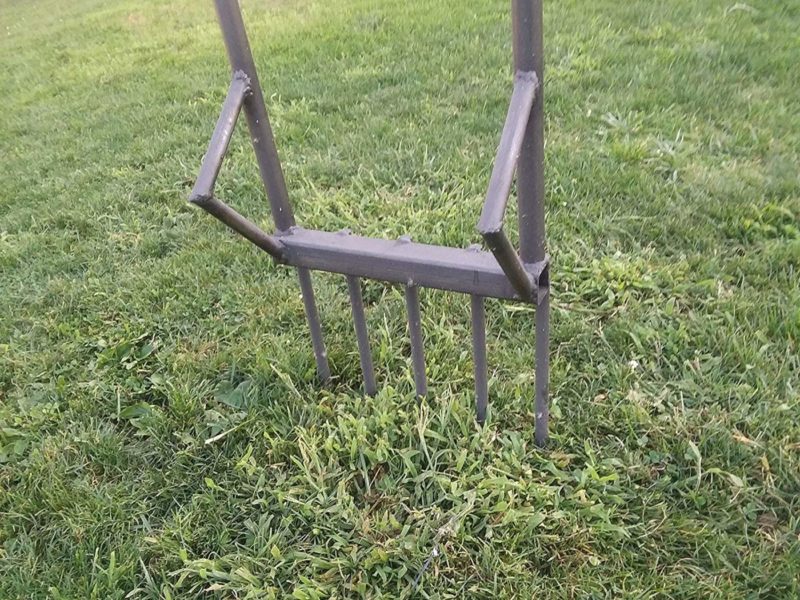
I am not a fan of tilling. But if you have compacted soil, you need to do something to make sure water will filter in below your compost zone. Otherwise, you end up with soft compost sitting on top of hard dirt which makes for poor drainage and good weed production conditions.
My method is simply to cover my soil with a few layers of cardboard and paper. Then, I thoroughly soak the area before I add compost. For reasons I don’t fully understand, those wet paper products attract every soil critter in town to take up residence underneath. Those critters work the soil and improve the drainage for me.
After that every 1-2 years, I use a broad fork on the beds to make sure air and water can percolate deeply. Even compost heavy soils need a little aeration occasionally. Tilling will bring up buried, dormant seeds. Aerating with a broad fork doesn’t disturb them nearly as much.
Many people also use methods like double digging or tilling once to get started. If you disturb the soil to that degree though, make sure you incorporate lots of organic matter into your soil. Then, pre-sprout your weeds by watering your beds for a few weeks before you move on to the next steps.
Step 5: Smother Seeds
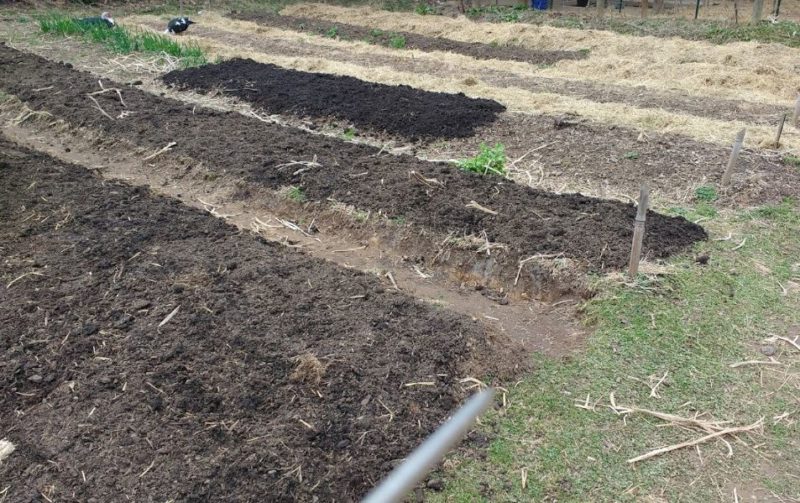
You could also call this step “add compost”. In an organic garden, you need to add a minimum of 2 inches of fresh compost annually; but more is better. Personally, I aim for 3-4 inches annually. For brand new garden beds, four inches of compost is my minimum.
By doing this, you effectively smother all those light-requiring weed seeds that may have been in your soil for years.
Step 6: Choose A Weed Control Planting Method
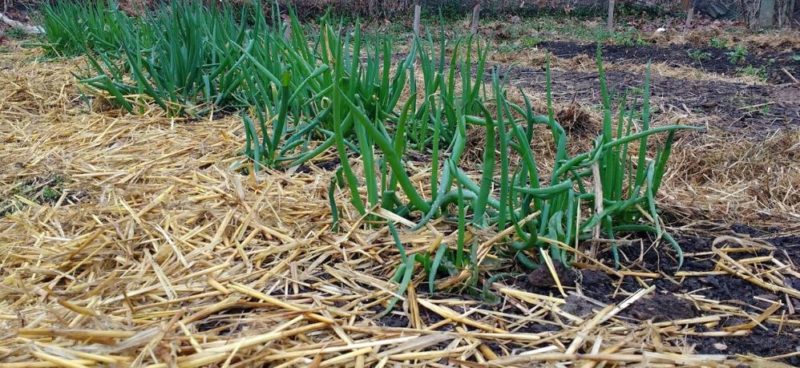
Even though we all try to keep weed seeds out of our compost and our gardens, they still get in there. Manure contains seeds. The wind blows in seeds. You may even bring them in on your clothes, shoes, and equipment.
Even with a good start as described in steps 1-4, weeding will still be necessary. Planting in configurations that minimize weed growth or make hoeing easy helps. There are two basic ways to plant your garden to make routine weeding less work.
Method 1: Neat Rows
You can plant in perfectly straight rows and precisely space your seedlings and transplants. This method makes it easy to go through your rows with a hoe and weed between the areas where you plant.
You often get more weeds germinating this way. But, if you use your hoe or hand rake often, weeding is just about as simple as sweeping a floor.
Method 2: Soil Coverage
The next method is what I call the soil coverage method. In this case, you still use precise plant spacing. But instead of rows, you tend to use diamond patterns to space plants more closely together.
You may also interplant different shapes of plants to provide the most soil coverage possible. If plants cover the soil with their leaves, then weed seeds have a hard time germinating. Plus, if they do, they grow slowly, so they are easier to remove.
For example, you might pair a tall plant like corn with a ground growing plant like winter squash. Then you’d mulch the soil underneath your corn until your squash vines could grow large enough to cast shade on the soil below.
Note: The closer you space your plants, the more fertility your garden must have for plants to stay healthy. Use vermicompost and organic fertilizers to make sure you have the nutrients you need for good production.
Combo Method
Personally, I do a bit of both of the above. I use neat rows for garlic, onions, and carrots. But, I line between the rows with cardboard topped with hardwood mulch. That way I only have to weed right around each onion plant.
For things like cabbage, I co-plant them with mustard to start, but as the cabbages get bigger and cover the soil, I remove the mustard. I always grow some sort of ground cover type vegetable under okra, corn, sunflowers. I usually transplant in a kind of vining plant after the taller plants have a good start.
Step 7: Maintain Your Garden
All that work above will be for nothing if you don’t take great care of your garden during the growing season. Weeds are more prone to take over when your chosen plants grow too slowly. So, you need to keep the conditions right for your cultivated plants to grow well at all times.
Water Deeply
Do not waste your time top dressing your garden with a splash of water. Make sure the water penetrates down to at least 6 inches, and more is better.
Fertilize as Necessary
In loam soil, sometimes all you need is an excellent compost to grow a good garden. However, in less than loamy soil, you may need fertilizer. Also, things like excessive rain or nitrogen hot spots, can sometimes temporarily bind nutrients in the soil. Too much of one kind of compost can also lead to a lack of availability of nutrients.
Make sure your plants have the fertility they have to grow well. If they are stunted, those opportunist weeds will move in and make it even harder for your plants to access nutrients.
WEO
You must WEO! As in Weed Early and Often. When you WEO, you stay ahead of weeds so you can use lazy tools like hoes, hand rakes, or shears rather than shovels and muscles.
Step 8: Succession Plant
Nature abhors a vacuum! So don’t let there be one in your garden.
Plan your plantings to cover as much of the growing season as you can. Using transplants can mean plants get larger faster in the garden. That cuts down on open soil times and makes WEO light duty work.
For direct planting of plants with edible leaves, try overseeding. Then, thin by using scissors to cut early leaves rather than pulling out the roots. This gives you short-term cover crop plus some “microgreen” leaves to munch on when you thin your seedlings.
Step 9: Remember Your ABCc – Always Be Cover-cropping!
A friend of mine says you can plant a cover crop or nature will plant one for you. That’s what weeds are. They are nature’s cover crops.
Don’t let mother nature pick your cover crops. Plant your own. It’s hard to start plants in July in my area. That means after I pull my cabbage, it might be a few weeks before I can plant vegetables again. So, instead, I’ll put in some cover crops that I know will sprout quickly in hot weather.
Buckwheat, millet, and sorghum are good choices for hot weather. You do have to keep them watered, and you may need to put them under a shade cloth if it’s too hot. But, they are pretty forgiving on the heat side of things.
In cooler weather crimson clover, Austrian peas, tillage radish, winter wheat, and mustard are my favorites for covering ground quickly. The first three on the list will die naturally after an extended cold. The others I sometimes have to harvest to kill. But, I pull them and leave them on my beds as mulch until it is time to plant again.
Conclusion
Not only does this weed control plan cut down on weed pressure using organic methods, but it is also precisely what you need to grow a great garden. After a few years, your weed pressure diminishes, and you simply get to enjoy growing tons of tasty food and beautiful plants.
Every so often, even in the best maintained gardens, crazy stuff happens. Weeds erupt out of nowhere for no apparent reason. When that happens, refer back to the list I mentioned at the outset and take emergency action.
Also, look to the weeds to tell you what may be going wrong in your garden. Then address the underlying problem to prevent further weed incursions.
